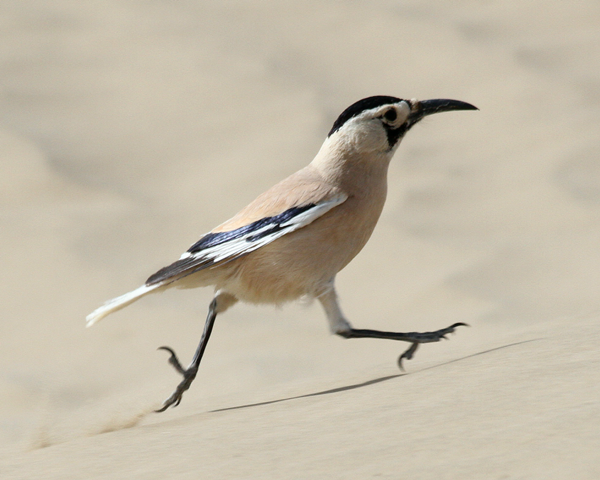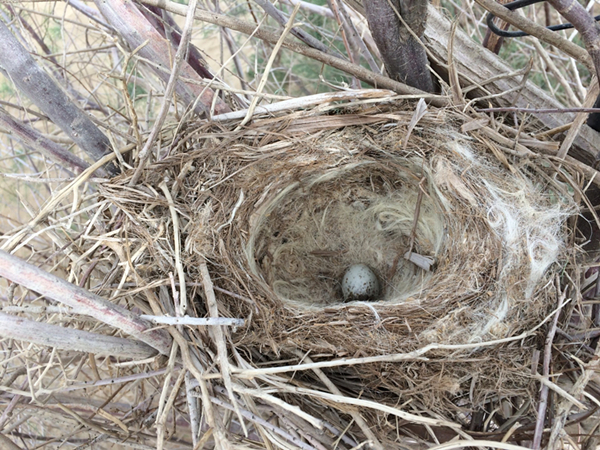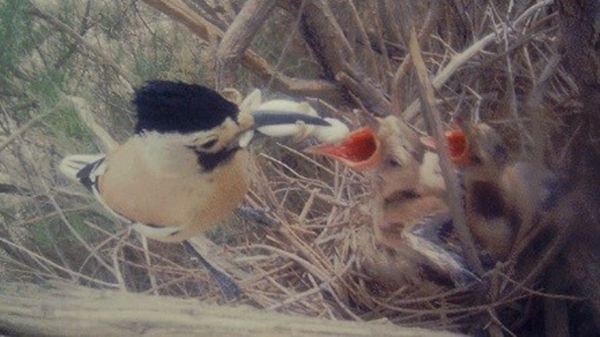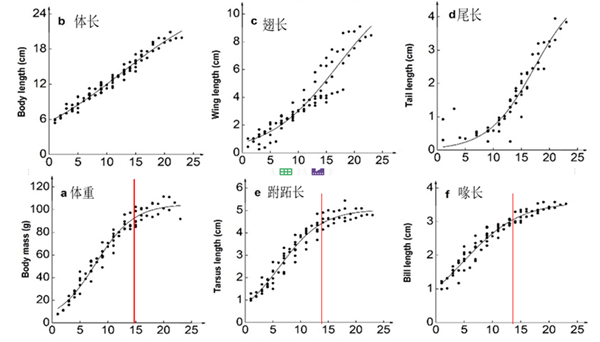Researchers Study Breeding Biology of the Xinjiang Ground-jay, an Endemic Bird Species in China
2023-10-31
Podoces belongs to the Passeriformes and there are four species in this genus, the Xinjiang ground-jay (Podoces biddulphi), Mongolian ground-jay (P. hendersoni), Turkestan ground-jay (P. panderi), and Iranian ground-jay (P. pleskei). The Xinjiang ground-jay is endemic to China and it is also the second class national protected wild animals in China. The Xinjiang ground-jay mainly distributed in the Taklimakan Desert and its adjacent areas. Because of the special living environment, we have very limited understanding of this species since it has been discoveried in 1874.
In response to the above situation, a team of researchers from the Xinjiang Institute of Ecology and Geography, Chinese Academy of Sciences used unmanned aerial vehicles (UAVs) and 24-hours video monitoring equipment to carry out a three-years continuous investigation on the breeding biology of Xinjiang ground-jay on the southern edge of the Taklimakan Desert.
The results showed that the density of Xinjiang ground-jays was about 0.05-0.07 pairs/km2, and they mainly nested on Tamarix spp. The clutch size is 1-3 eggs, and the average major and minor egg axis was 3.3 cm and 2.3 cm. Compared with other ground-jay of the same genus, Xinjiang ground-jays laid fewer but larger eggs, which may be due to the need to increase reproductive investment and improve reproductive success in harsh environments. The eggs of Xinjiang ground-jays are mainly incubated by females, and the incubation period is about 18 days. The nestling period is about 17 days. Nestlings were fed by both parents, and the nestling's food consisted of the lizards and beetles. The growth and development of nestlings can be divided into three stages: from day 0 to day 5, the nestlings have closed eyes, corneous beaks, and downy feathers covering most of their bodies; On days 5 to 10, the nestlings open their eyes; After more than 10 days, the nestlings can stand with feathers covering their entire body. A total of 32 eggs were recorded, and 12 nestlings eventually left the nest, which indicated a low reproductive success rate. The main causes of breeding failure are bad weather and predation by raptors. This study reports the detail information of the breeding biology of the Xinjiang ground-jays for the first time and also provides a new perspective for exploring how birds adapt to arid desert environment.
The related results were published in the Global Ecology and Conservation under the title of “Breeding biology of the Xinjiang ground-jay Podoces biddulphi in the Taklimakan Desert, NW China”. The first author of the paper is Master student Kechun Wang of Xinjiang Institute of Ecology and Geography. Associate Prof. Wenxuan Xu and Feng Xu are the co-corresponding authors. The research was supported by the National Natural Science Foundation of China and the China Biodiversity Observation Networks (Sino-BON).
Article link: https://www.sciencedirect.com/science/article/pii/S2351989423003256

Figure 1 Xinjiang ground-jay.

Figure 2 Nest and eggs of the Xinjiang ground-jay.

Figure 3 Xinjiang ground-jay female feeding the nestlings.

Figure 4 Xinjiang ground-jay nestling growth curves for six morphological variables.
Contact:
LIU Jie
Xinjiang Institute of Ecology and Geography
Tel: 86-0991-7885505
E-mail: liujie@ms.xjb.ac.cn
Web: http://english.egi.cas.cn/



